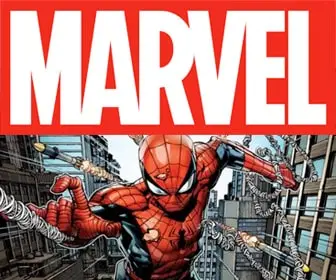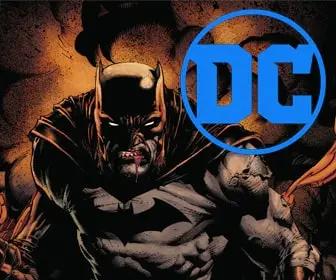
Beyond Riffs: Heavy Metal Magazine
Introduction: A Magazine Forged in Steel
In 1977, a new breed of comic book roared onto the scene. Heavy Metal Magazine wasn’t bound by the limitations of mainstream comics. It embraced a fusion of science fiction, fantasy, and horror, all delivered with a heavy dose of stunning artwork and mature themes. This counterculture icon became a gateway for American audiences to discover the rich world of European comics, forever changing the landscape of the genre.
The Art of Heavy Metal: A Visual Feast
Heavy Metal wasn’t just about the stories; it was about the art. The magazine became a platform for some of the most visionary artists of their time. European masters like H.R. Giger, with his biomechanical grotesqueries, and Frank Frazetta, known for his dynamic fantasy illustrations, brought a level of detail and intensity unseen in American comics. Their work wasn’t just about superheroes in tights; it was about muscle-bound barbarians battling monstrous creatures in alien landscapes. Heavy Metal’s artists pushed boundaries, creating a visually stunning and often shocking experience for readers.
Stories and Characters: Heavy Metal’s Enduring Universe
Unlike the episodic adventures of traditional superhero comics, Heavy Metal thrived on serialized stories and recurring characters. Readers could follow the ongoing saga of Taarna, the fierce warrior princess who graced numerous covers, or delve into the gritty cyberpunk world of “The Metabarons” by Juan Giménez. The magazine wasn’t afraid to tackle complex narratives, weaving tales of space exploration, post-apocalyptic struggles, and dark fantasy. These stories weren’t for the faint of heart, often featuring violence, sexuality, and philosophical themes that resonated with a mature audience.
Legacy and Impact: A Heavy Metal Echo
Heavy Metal’s influence transcended the realm of comics. Its dark, imaginative visuals left a lasting impression on animation, inspiring adult-oriented cartoons like “Heavy Metal” (1981) and “Aeon Flux” (1991). The magazine’s blend of genres also resonated with the heavy metal music scene, fostering a visual aesthetic that permeated album covers and music videos. Even Hollywood felt the pull of Heavy Metal, with films like “Terminator 2: Judgment Day” (1991) and “Sin City” (2005) owing a creative debt to the magazine’s gritty style. While Heavy Metal ceased publication in print form in 2023, its digital presence ensures its legacy lives on. It remains a testament to the power of pushing boundaries and a reminder that comics can be more than just capes and tights.
Collectors
Here are 5 Heavy Metal Magazine issues that every fan should own:
- Issue No. 1 (January 1977) This is a no-brainer for any Heavy Metal fan. This first issue introduced readers to the unique blend of science fiction, fantasy, and horror that the magazine would become known for. It also featured the first appearance of Taarna, a fierce warrior princess who would become a recurring character.
- Issue No. 100 (September 1986) This landmark issue featured a who’s who of comic book talent, including contributions from Moebius, Richard Corben, and Bernie Wrightson. It also included a special anniversary interview with founding editor Len Wein.
- Heavy Metal Presents Mobius (February 1980) This special issue is a must-have for any fan of Moebius, the legendary French artist who had a huge impact on Heavy Metal’s visual style. The issue features a collection of Moebius’s work, including stories, illustrations, and sketchbook pages.
- The Metabarons by Juan Giménez (1990) This special issue collected the first four chapters of “The Metabarons,” a critically acclaimed space opera series by Juan Giménez. The series would go on to become one of Heavy Metal’s most popular features.
- Heavy Metal #108 (July 1986) This issue features art by some of Heavy Metal’s most popular artists, including Moebius, Juan Gimenez, and Esteban Maroto. The stories include “Celestial Venice” by Moebius, a science fiction fantasy about a city built on the rings of Saturn, and “Cinderella” by French artist Nicole Claveloux, a dark and twisted take on the classic fairy tale.
These are just a few of the many great Heavy Metal Magazine issues that have been published over the years. With its rich history and commitment to quality storytelling, Heavy Metal is a must-read for any fan of comics. Finding these particular issues might require some searching through online retailers or comic book specialty stores, but they are well worth the effort.
Conclusion: A Final Roar
Heavy Metal Magazine wasn’t just a comic book; it was a cultural phenomenon. It challenged the status quo, offering a potent mix of art and storytelling that resonated with a generation. From its groundbreaking visuals to its mature narratives, Heavy Metal left an indelible mark on comics, animation, and even music. Though its print run may be over, its influence continues to inspire creators and captivate readers. Heavy Metal Magazine stands as a testament to the power of imagination and the enduring appeal of a good story, well-told and beautifully illustrated.














